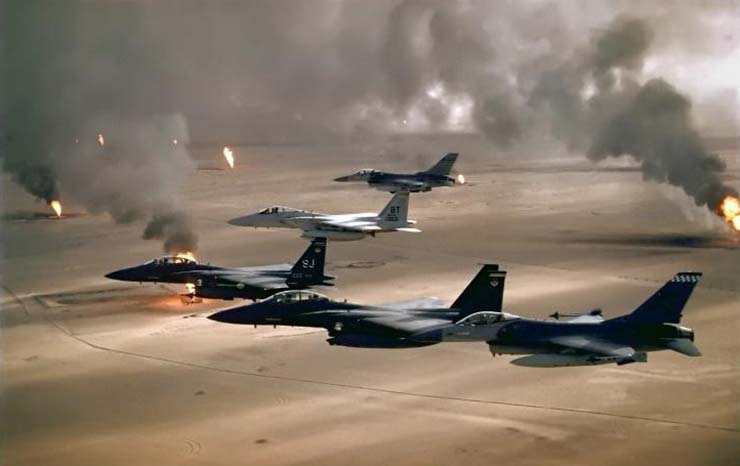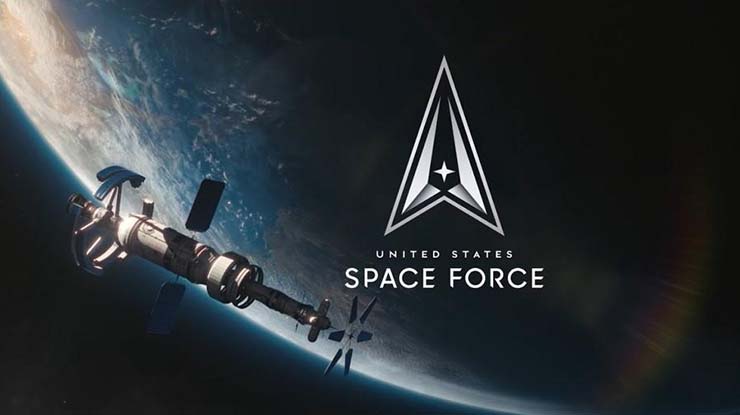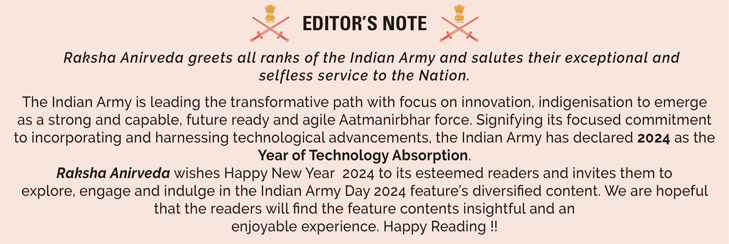
Evolution: A fast unfolding war sequence at its violent extreme saw remotely controlled machines moving in, evidently dominating the battlezone while an army of men downed and dusted surrendering to save their last breath. All of this beamed onto life-size screens for making correct assessments; as to figure out the right intent, target profile, and enemy counts, identify any known enemy commanders using AI-powered facial recognitions, cross-checking with geotagged locations of a known sequence of appearances, and simultaneously sharing video linked assessment output to senior commanders connected via secured space assets. At the point of decision making, multiple fighter packages swooped in taking off from forward airstrips, on board from aircraft carriers and some regrouping which were already airborne via highly secured and fail-safe command net. It may appear a dramatised plot, but the reality is these all are part of already executed operations. During the 1991 Gulf War, Pioneer RPVs of the US, while assessing the battlefield located a bunch of Iraqi soldiers, who, anticipating more precision bombing waved the white flag at it; it was the first-ever instance in human history of the man surrendering to the machine!
As technology has evolved by leaps and bounds, an evolutionary challenge has emerged now, the conventional war-fighting concepts have been falling by the wayside. The arrival of drones for instance has blurred the frontage of opposing forces, there is nothing called ‘secured depth’. Contact can take place anywhere and not in a sequential manner of the contact zone, intermediate zone and depth zone. Troops in depth can be targeted first without even having an opportunity to ‘see’ the enemy leave alone respond to it. These have a devastating impact on the morale of troops, which is a very critical parameter in combat. The arrival of swarm technology, which Russians employed against Ukraine in the 2014 conflict, saw an entire Mechanised Brigade of Ukraine readying to launch an offensive on the Russian positions getting decimated by the coordinated drone swarm and artillery barrage. Similar graduation has happened in air warfare, where stealth technology has ensured US B2 bombers continue pounding enemy targets uncontested in the 1999 Kosovo war. Likewise, the arrival of nuclear-powered submarines changed the course of sea domination. It was like submarines can remain deep down forever.
These were disruptive technologies that saw the conventional tactics rewritten and forced the senior military leadership to revisit battlefield management. They are just above the horizon aspects; there are numerous organic technological advancements that are now part of the routine in modern militaries such as communications, avionics, advanced electronics, navigation, precision engagement and the list goes on and on. Major military powers are racing to master these new domains while aiming to be the last word themselves on each of them. An all-out war on the lines of World War 1 or World War 2, is not something we may probably see; but if yes, it would be a war roughly hugging the fringes of imagination.
How Tech Adept Indian Forces Are?
India began its journey as a poor independent nation with a society mired in challenges of basic needs and imposed wars. India recorded an average of 3.5 per cent annual growth from 1950 to 1980 where its annual per capita income grew by a meagre 1.3 per cent. The economic challenges initially proved too much for the country to focus on military requirements. It was only in the late 90s with resources at hand that military R&D and long-term investments in indigenous weapon programmes took off.

India realigned its modernisation plan to overcome the challenges of resource limitation by prioritising what was more critical. An ideal scenario would have all aspects of military affairs addressed at once, but that was neither cost-effective nor realistic keeping ground realities in mind. This was also a time when major powers went into overdrive of nuclear tests validating their latest arsenal as the CTBT adoption in UNGA neared in September 1996. The development of nuclear technology is a highly complex and prohibitively costly affair. India dived right into it with a string of nuclear tests of its own. The sanctions followed, squeezing out indigenous capabilities and even maintenance of the existing arsenal became very difficult. A nation so heavily dependent upon military imports to sustain its armed forces was exposed to the worst reality. Though the silver lining was that the episode finally convinced all stakeholders – military, government, policy planners and scientific community – that era of imported security is over.
New Frontier
A future-ready force has to have certain critical capabilities – nuclear arsenal, indigenous space assets, modern armed forces with strong naval domination and sustainable assembly lines backed by stout economic muscle. The emerging threats have pushed even the US in reorienting and realigning its resources while creating new capabilities. The creation of the US Space Force in 2019 is one such instance. While countries such as China, Turkey and Australia are vying for capability building. A critical analysis of India’s approach to military modernisation suggests that after over two decades of push and many reverses country seems to have learned the nuances of building big boys tools and broadly ticking all the essential boxes. While supporting indigenous efforts there are outright purchases, support to private ventures and deadlines to defence PSUs. India also seems to be putting in place future learning new institutions. Department of Space, Integrated Space Cell, Defence Cyber Agency, office of CDS, multi-dimensional force composition with more such institutions in the making.
India appears to have chosen its verticals well to enable focused progress and address evolving security challenges in its extended neighbourhood. Its weapon programme, modernisation of the field army, joint developments and platform automation have given a strong momentum. The public-private partnership is another bright spark in the making, leveraging of huge defence market to mega foreign players into forging local partnerships will have massive spin-off benefits in near future for armed forces. An import-based national security structure has now given way to homegrown solutions with ambitious targets. The smartly chosen theme for the recently held 12th Def Expo – ‘Path to Pride’ reflects upon national ambition. It had the largest-ever count of 1340 Indian defence firms showcasing their technology to representatives from 75 countries!

The country has quietly graduated from net importer to net exporter in defence solutions. There is strong growth in design, development and manufacturing capabilities all three being critical parameters for big-ticket weapon platforms. Indian private sector has pitched in with cutting-edge technologies in swarm drones, artificial intelligence, robotics, mobility solutions and heavy artillery. Strong growth has been witnessed in R&D in futuristic technologies such as Autonomous Systems, Immersive Technology, Big Data Analytics, Aerospace and Blockchain. These cumulatively lead towards the development of a complete defence industrial ecosystem of super defence solutions and will have a corresponding impact on future modernisation goals.
The Future Warzone
Today conventional wars have already been replaced with hybrid conflicts incorporating cyber war, unmanned systems, harnessing and leveraging non-state actors, hostile economic measures and a hanging fear of nuclear threat. The future of war presents a distant extravagant, it will bear a sea change in approach towards battle management. Evolving technologies will overhaul the combat in four different aspects – it will be autonomous, lethal, networked & sustainable. This is very enthralling, as the future combat will witness migration to a contactless domain with AI-powered robotics seamlessly connecting and autonomously deploying hard assets encompassing sub-surface to aerospace.

However, in all these, there is one grave hazard that we may just lose out on the human component – the experience of great military minds or the man-in-loop principle. The game has already begun, in a recent man vs machine duel, Meta’s CICERO excelled in strategy game Diplomacy and learned to ‘Negotiate’ with other players. Last month, DeepMind’s AI-powered algorithm DeepNash while playing another board game, Stratego made ‘Sense’ of imperfect information. DeepNash effectively bluffed and fooled its human opponent to win the game. This reflects a dangerous scenario wherein, the assumption that a human mind is superior to all things has been turned upside down, as machines are now learning to exploit the emotional limits of humans. A complete irony of the situation – individually imperfect humans, collectively developing perfect machines.
Apart from tech inferiority, even tech superiority is going to be a problem. Quick options will lead to further lowering of thresholds. While technology bypasses will make desired safeguards vulnerable. If the time ahead leads to more situations of remote human intervention on the war front, completely detached from a sense of self-harm, then we are already rolling downhill. The pace of technology will remain astounding; the challenge is not to keep pace but how to stay ahead of the curve. The time for being ‘fourth or fifth country to do so’ is passe now. The evolution demands India to work and develop pioneering assets on its own. Howsoever, big technology and capabilities grace the battlefield, the age-old reality of war outcomes between the powerful and weak will not change. Apparently, the good news for India is that there aren’t many options than to further excel its modernisation efforts. A strong beginning has been made no doubt but what is required now is the institutionalisation of management efforts, or else it runs the risk of getting out of sync with avoidable tampering in a later time frame. The future warzone will be entirely tech-driven offering India a prospect of exponential capability jump. India would need nothing less than menacing power to sombre its adversaries if it wants to defend its peace!
–The writer has varied experience in security paradigm and is a keen follower of international geopolitics. He is also the author of popular blog site (geostrat.in) on geo-strategic affairs. The views expressed are personal and do not necessarily reflect the views of Raksha Anirveda











